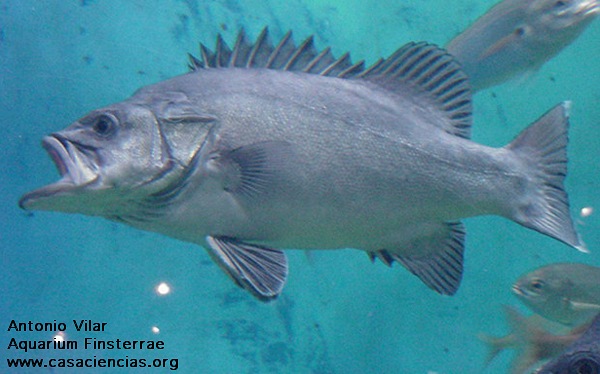Identification:
Large heavy set fish which is often confused with the groupers. The head is large, as are the eyes, and the mouth with it’s protruding lower jaw. The preoperculum has a series of body ridges and is serrated on it’s edge, whilst the operculum is defined with a central bony ridge or strut, running across it (almost level with the eyes), and reaching the point of the operculum as a spine. The outline of the head has a depression just above the eyes with ridges / swellings both on the brow and between the eyes.
Two dorsal fins are present, although fused. The first dorsal fin is composed of 11 stout membrane bound spines, whilst the second dorsal fin is composed of 12 branched rays, with a raised fleshy or bilobed base. The anal fin is short based, but again raised, and has three spines followed by 8 to 10 branched rays. The caudal fin is broad with an almost rounded end. The lateral line has some 90 to 144 strongly ctenoid scales.
Coloration ranges from brown through to grey on the back and upper sides, and becoming lighter towards the yellow hues of the belly. A degree of molting may be observed, esp. in juveniles.
Breeding:
Spawning occurs during the summer.
Habitat:
This is an open water fish of the shelf and slope, and tends to be bottom dwelling, normally found at depths of between 100 to 200m, although down to 1000m in some cases. Younger fish may be observed higher up the water column, under floating material, such as driftwood and weed etc..
Food:
Feeds mainly upon fish such as pollack etc., but supplements this with various crustaceans and squid.
Range:
Found mainly on the western side of the British Isles, and round into the upper North Sea.
Additional Notes:
|
